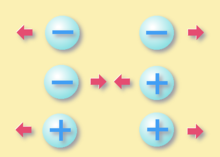 The skull is the bony structure that shapes the head and protects the structures of the brain. The bones in its anterior part form the face, while those in the posterior part originate the cranial vault.
The skull is the bony structure that shapes the head and protects the structures of the brain. The bones in its anterior part form the face, while those in the posterior part originate the cranial vault.
The bones of the face are distributed forming holes for the orbits of the eyes, the nasal cavity and the oral cavity.
Distribution of the bones of the face
The bones of the face are 14 in total. They are:
Malar bone. There are two, one on each side, this shapes the cheekbones, constituting an important part of the floor of the eye sockets. From its base a prolongation is emitted that is directed backwards to join the temporal bones. This extension is called the zygomatic arch, it is a prominence that can be felt in front of the ears.
Bones of the nose. They are two small bones that are located in the midline below the frontal bone and inside the upper jaw bone. These bones form the base of the nose and provide an attachment point for the cartilage that forms the nasal septum.
Vomer It is a single bone, located in the midline, just behind the cartilage of the nose. Its function is to divide the nasal cavity into two tubes that correspond to the nostrils.
Lacrimal bone. It is also known as unguis. They are two small bones that are located forming part of the inner face of the orbit. These bones shape the tear duct.
Maxilla. There are two bones, one on each side, located inside the malar bone, they form the inner wall of the orbit and the roof of the oral cavity. It contains holes called alveoli where the teeth and molars of the upper dental arch are inserted.
 Palatine. They are two bones located behind the upper jaw, they are deeply distributed in the midline. These bones form the walls of the nose and have prominences that shape the upper and middle nasal turbinates. Their name is due to the fact that they form the back part of the roof of the oral cavity, which corresponds to what is known as the hard palate.
Palatine. They are two bones located behind the upper jaw, they are deeply distributed in the midline. These bones form the walls of the nose and have prominences that shape the upper and middle nasal turbinates. Their name is due to the fact that they form the back part of the roof of the oral cavity, which corresponds to what is known as the hard palate.
Lower turbinates. They are two bones that are located below the palatines, giving rise to a curved shell-shaped structure known as the inferior turbinate of the nose. Together with the palatine they form the outer wall of the nasal cavity.
Lower jaw. Also known as jaw. It is a bone that forms the lower part of the face. It joins the temporal bone, creating the temporomandibular joint, which is the only mobile joint in the head, necessary to be able to speak and chew. Like the upper jaw, the mandible consists of a series of holes called alveoli where the teeth and molars of the lower dental arch are inserted.
Photos: Fotolia - 7activestudio / Reineg









